The shotgun lock at the mid-way stage of the 19th century was little changed from the flintlock era, which had lasted two centuries by then, in the manner in which it operated.
Design change tends to arrive either by way of evolution or revolution. By 1875, the gun trade had been busy for forty years trying to evolve the flint-era sidelock into a hammerless modern gun, via countless permutations, as flint gave way to percussion cap, that, in turn, to pin-fire and, finally, to centre-fire.
The advent of the centre-fire cartridge in 1861, and its increasing adoption, paved the way for a revolutionary concept to leapfrog all those evolutionary ones and place itself firmly at the forefront of what the Victorians would have considered modern hammerless sporting guns.
Just fourteen years after George Daw introduced the centre-fire to Britain, two Birmingham gunmakers patented a gun action that is still popular, trusted and widely manufactured today. They were William Anson and John Deeley (the Elder) and they both worked at Westley Richards.
The Anson & Deeley ‘boxlock’ was indeed a revolution. It replaced the seven limbs of the typical hammer sidelock with three. Because they were few, they could be made robust. Assembly was straightforward and manufacturing costs reduced.
Here, at last, was the gun of the future that the Industrial Age Victorians had been looking for; and it was made in the millions, by just about every gunmaking firm in Britain and a good many overseas, as well. For twenty-two years, the Anson & Deeley set the benchmark for body-action guns, despite many attempts to copy it or circumvent the patent..
While it was hugely successful, a preference for ‘London Pattern’ side-locks took hold amongst the higher echelons. The success of the boxlock , and its ubiquity, almost certainly dented its desirability in the eyes of those seeking exclusivity.
At this point in time, Westley Richards revisited the Anson & Deeley action and refined it. One drawback of the original design is that to dis-assemble (and then re-assemble) the lock work requires some tools and a degree of practical competence and experience on the part of the man using them.
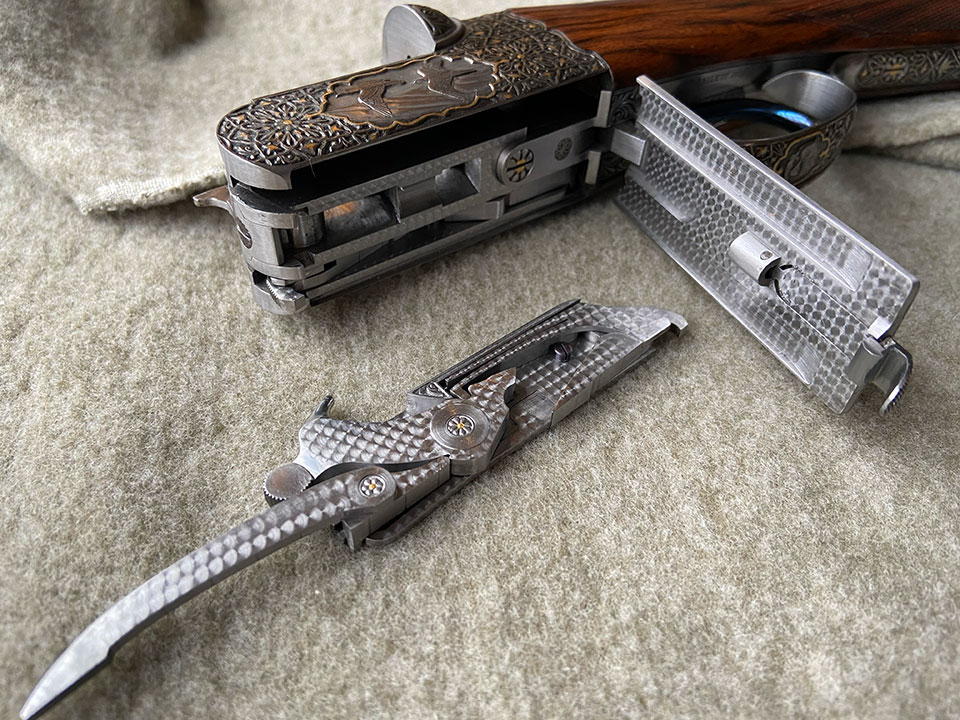
Some also thought the visible pins on which the mechanism pivoted were unsightly. A ‘pinless’ version was thought desirable. With this in mind, Leslie B. Taylor, then Managing Director of Westley Richards, tasked his foreman with the task of refining the original design. It culminated in 1897 with Taylor’s patent ‘hand detachable lock’.
What Taylor did was to mount all the components (mainspring, sear, cocking dog, tumbler) onto a steel plate. That plate could be inserted via slots in the action body and located with precision so that the sear linked with the trigger and the cocking dog with the forend.
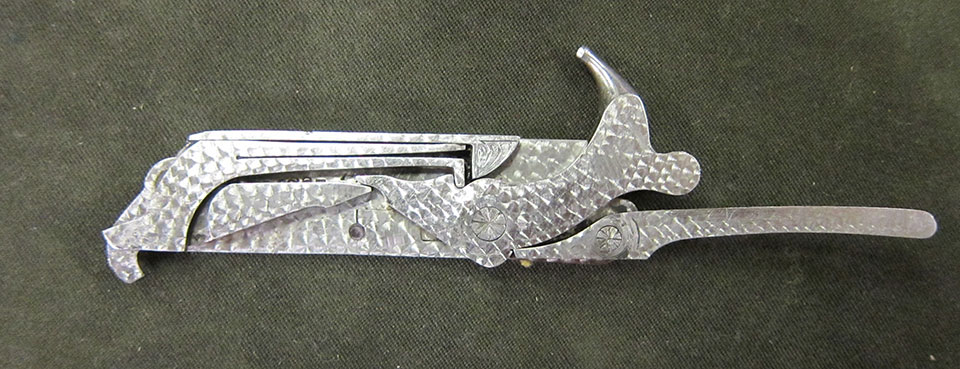
What he created, was a gun with all the advantages offered by the Anson & Deeley with the ease of disassembly of a hand-detachable sidelock. Leslie B. Taylor had created what is still the Westley Richards signature action, used in both shotguns and double rifles.
Pioneering French aviator Antoine de Saint Exupery once wrote; ‘It seems that perfection is reached not when there is nothing left to add, but when there is nothing left to take away’. Westley Richards achieved exactly this with the advent of the ‘drop-lock’, as it became widely known.
The drop-lock lock consists of a leaf spring, a tumbler, a sear, a sear spring and a cocking dog. Add the lock plate itself and the tumbler pivot on which the tumbler is located and you have seven parts in total. They are made so strong that material failure is almost unheard of, especially so in those made to ‘best’ quality, as Westley Richards guns and rifles are.
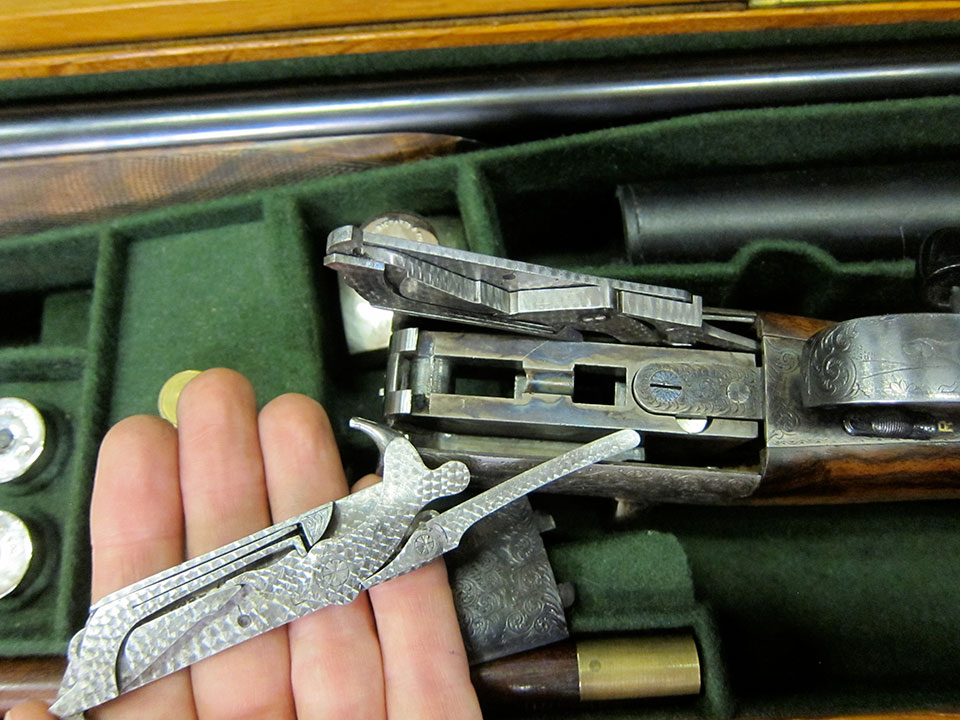
Compare that number to a best sidelock, which has twenty-two separate components. That being true, it is easy to see why the Westley Richards is theoretically the better system, applying the logic of Saint Exupery.
The advantage of leaf springs over coil-springs, as found in many modern Continental over & under guns, as well as lower-grade British sidelocks of the 20th-century, is well known.
A well-made leaf spring delivers a crisp blow to the cartridge cap, ensuring reliable ignition, it is easy to regulate for the clean-break trigger-pull, which is essential to good shooting. A well-made leaf spring will last almost indefinitely, breakage occurring perhaps once in a century, unless you are very unlucky.
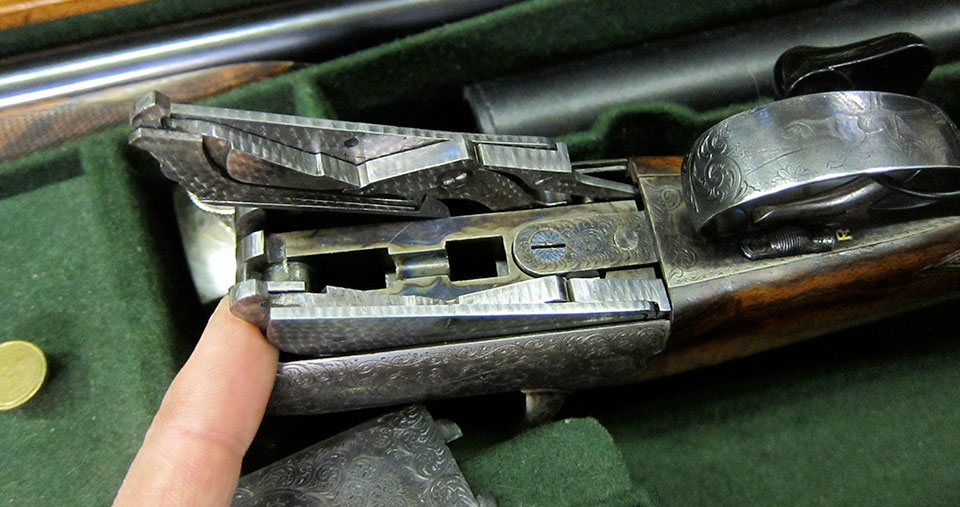
Because the drop-lock is so easy to remove and replace, many customers have a second set made. That way, if a breakage or malfunction does occur, a new lock can be inserted with ease, requiring no more than a finger and thumb to perform the operation.
Should a sportsman drop his hammerless sidelock or hammer gun into a swamp, he can anticipate problems following not far behind. However, befall the same misfortune with a drop-lock and it can be stripped and dried in a matter of hours by anybody, anywhere.
it has been fitted to shotguns and rifles of all bores and calibres
In the century and a quarter since the drop-lock first appeared in Westley Richards catalogues, it has been fitted to shotguns and rifles of all bores and calibres, both double and single barrel. It remains the preferred action of the company’s twenty-first century customers and has proven itself to be without peer in terms of reliability, practicality and efficiency.
A detailed inspection of a modern production Westley Richards drop-lock uncovers the exquisite attention to detail applied to every facet of the lock, with its burnished springs and jeweled limbs.
It could be argued that the 1897 drop-lock is the sporting double perfected. Detractors tend to couch their arguments in emotion and waffle. When critiquing the Westley Richards from an engineering, production, or practical sporting viewpoint, it is all but impossible to fault it or find it inferior to any other available action in any meaningful way.
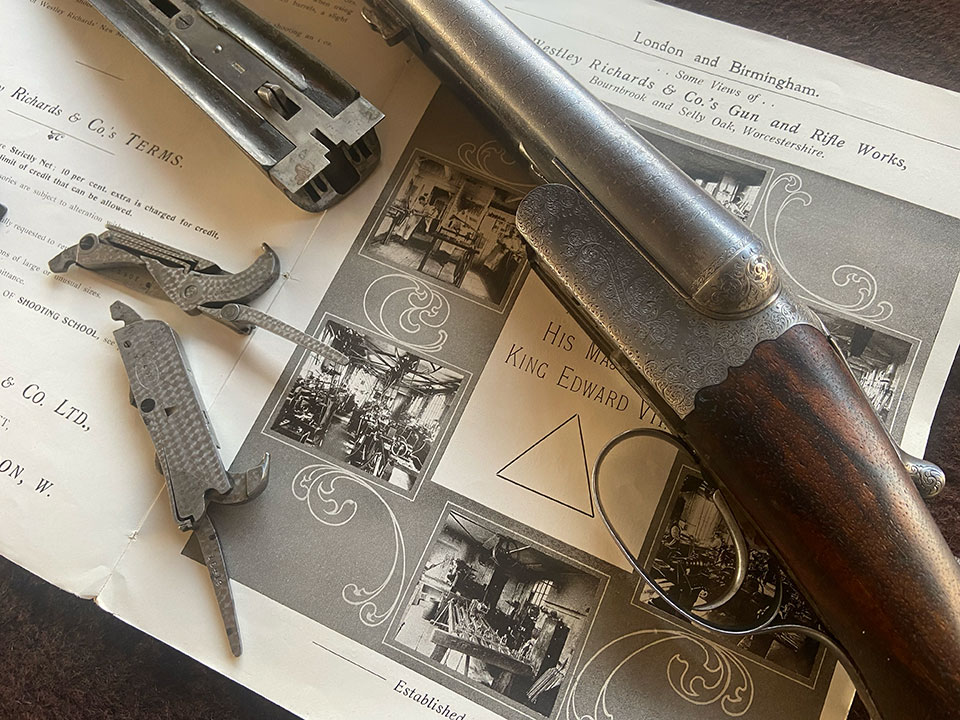
In the American vernacular, ‘KISS’ was popularized in the 1960s by Kelly Johnson, lead engineer of the Lockheed Skunk Works, who advised his engine design team to ‘Keep it Simple Stupid’.
Westley Richards applied the principle six decades before it was coined, with the release of the 1897 drop-lock.
Published by Vintage Guns Ltd on




